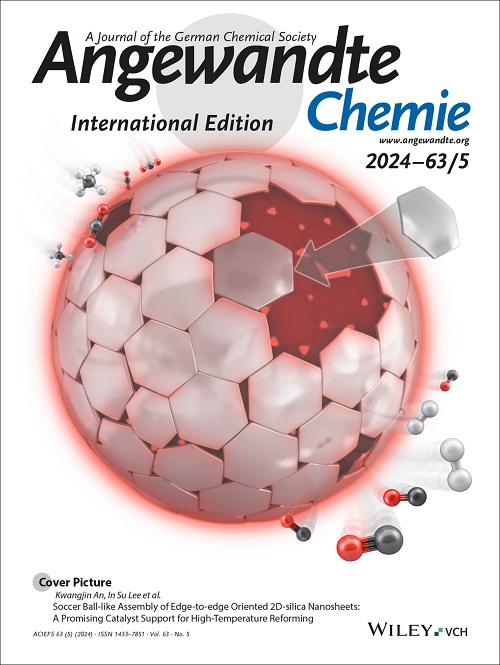Quantum Spin Exchange Interactions Trigger O p Band Broadening for Enhanced Aqueous Zinc-Ion Battery Performance
IF 16.1
1区 化学
Q1 CHEMISTRY, MULTIDISCIPLINARY
引用次数: 0
Abstract
The pressing demand for large-scale energy storage solutions has propelled the development of advanced battery technologies, among which zinc-ion batteries (ZIBs) are prominent due to their resource abundance, high capacity, and safety in aqueous environments. However, the use of manganese oxide cathodes in ZIBs is challenged by their poor electrical conductivity and structural stability, stemming from the intrinsic properties of MnO2 and the destabilizing effects of ion intercalation. To overcome these limitations, our research delves into atomic-level engineering, emphasizing quantum spin exchange interactions (QSEI). These essential for modifying electronic characteristics, can significantly influence material efficiency and functionality. We demonstrate through density functional theory (DFT) calculations that enhanced QSEI in manganese oxides broadens the O p band, narrows the bandgap, and improves both proton adsorption and electron transport. Empirical evidence is provided through the synthesis of Ru-MnO2 nanosheets, which display a marked increase in energy storage capacity, achieving 314.4 mAh g-1 at 0.2 A g-1 and maintaining high capacity after 2000 cycles. Our findings underscore the potential of QSEI to enhance the performance of TMO cathodes in ZIBs, pointing to new avenues for advancing battery technology量子自旋交换相互作用触发 O p 带拓宽,从而提高锌离子水电池性能
对大规模能源存储解决方案的迫切需求推动了先进电池技术的发展,其中锌离子电池(ZIB)因其资源丰富、容量大、在水环境中安全等优点而备受瞩目。然而,在锌离子电池中使用氧化锰阴极却面临着导电性和结构稳定性差的挑战,这源于二氧化锰的固有特性和离子插层的不稳定效应。为了克服这些限制,我们的研究深入到原子级工程,强调量子自旋交换相互作用(QSEI)。量子自旋交换相互作用(QSEI)是改变电子特性的关键,可显著影响材料的效率和功能。我们通过密度泛函理论(DFT)计算证明,锰氧化物中增强的 QSEI 可拓宽 O p 带、缩小带隙并改善质子吸附和电子传输。我们通过合成 Ru-MnO2 纳米片提供了经验证据,这种纳米片的储能能力显著提高,在 0.2 A g-1 的条件下可达到 314.4 mAh g-1,并且在 2000 次循环后仍能保持高容量。我们的研究结果凸显了 QSEI 在提高 ZIB 中 TMO 阴极性能方面的潜力,为电池技术的发展指明了新的道路。
本文章由计算机程序翻译,如有差异,请以英文原文为准。
求助全文
约1分钟内获得全文
求助全文
来源期刊
CiteScore
26.60
自引率
6.60%
发文量
3549
审稿时长
1.5 months
期刊介绍:
Angewandte Chemie, a journal of the German Chemical Society (GDCh), maintains a leading position among scholarly journals in general chemistry with an impressive Impact Factor of 16.6 (2022 Journal Citation Reports, Clarivate, 2023). Published weekly in a reader-friendly format, it features new articles almost every day. Established in 1887, Angewandte Chemie is a prominent chemistry journal, offering a dynamic blend of Review-type articles, Highlights, Communications, and Research Articles on a weekly basis, making it unique in the field.
文献相关原料
| 公司名称 | 产品信息 | 采购帮参考价格 |
|---|

 求助内容:
求助内容: 应助结果提醒方式:
应助结果提醒方式:


